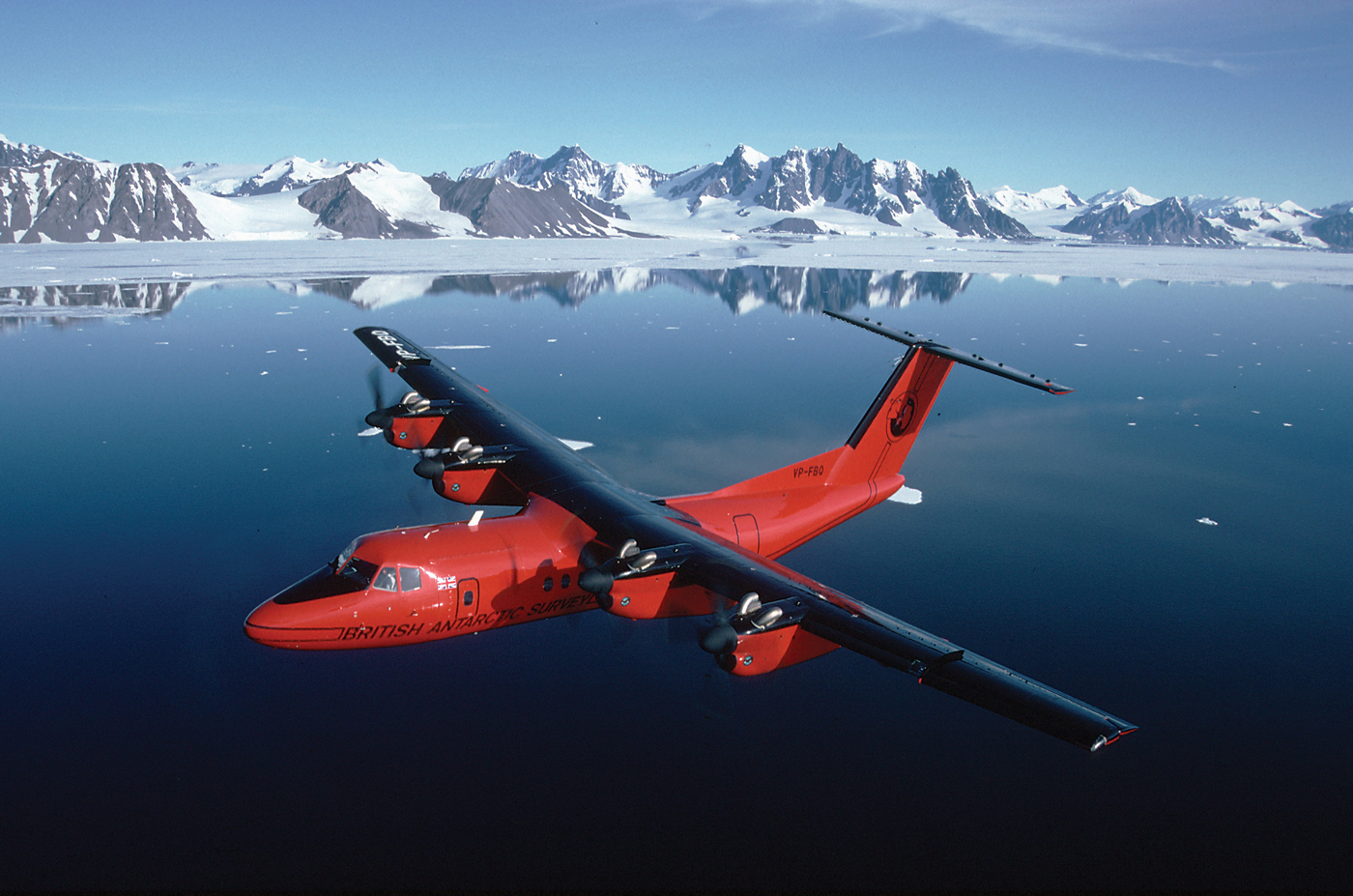How long do you think it would take to travel across the globe? What about on a 60-year-old plane? Well, in just one month, the deputy chief pilot for the British Antarctic Survey, Vicky Auld, will hopefully be ready to take off on her 55-hour journey across the world.
Every year, Auld spends months preparing for the yearly ferry flight from Canada to Antarctica for the organization. This challenge consists of a 55-hour-long flight from one point of the globe to another over the course of 12 days. Or as Vicky herself states, “a massive adventure.” While her colleagues will be flying in a 40-year-old twin-engine aircraft, Vicky will be piloting a four-engine and 60-year-old Havilland Dash-7.
Although the design of the De Havilland, nicknamed Dash-7, began in the 1960s, this unique plane only first drifted off into the sky in 1978 under the name of its parent company, the Havilland Canada Aircraft Company of Canada, whose factory was located in Downsview, Toronto. The aircraft was originally built to be used in the rough Canadian wilderness and to battle extreme weather conditions, so they designed the plane to have both a short take-off and landing. Meanwhile, the aircraft being used by her peers –known as “The Twin Otters,” and renowned for its use for commercial skydiving operations – is extremely similar to the Dash 7. In fact, the DHC Dash-7 and the DHC Twin Otters were created and presented at the same time, but the main difference was that the space inside the Twin Otter was much more limited. This means they have fewer people who can fit on board. While the Dash 7 has a carrying capacity of 48 people, only 20 passengers fit in the Twin Otter.
Of course, the number of engines on the aircraft is one of the main determining factors of the amount of weight a plane can carry. In the Dash-7 twice the people fit since there are twice the amount of engines. Specifically, the Dash 7 has double the number of engines as the Twin Otter Now, even though The Twin Otter is a simpler version, both of these aircraft are overengineered, which means that they can both fly in severely tough circumstances. Vicky explains how these aircrafts allow her to “land at places where no one has ever landed before.”
Although this trip may sound inviting to some, the conditions are extremely difficult. The pilot, Vicky, explains how once in the sky they have no access to toilet facilities, air conditioning, or even room to stand up. For her, the cabin heaters which keep the cockpit warm are just enough. In addition, if any of the aircraft end up experiencing some kind of damage or trouble, Canada is the end of the route, which is coincidentally the best place for expert maintenance and engineering support for the aircraft (since they are built there), and there is a large network of companies capable of providing these services. Of course, Auld is well aware that any greater issue may immediately affect her. She bravely stated that she and her team are “taking off with a weight at take-off that if we lose an engine, we will basically be going down.”
Works Cited
“De Havilland Canada DHC-7 Dash 7.” BAE Systems, https://www.baesystems.com/en/heritage/de-havilland-canada-dhc-7-dash-7. Accessed 24 September 2024.
Dinn, Michael. “Dash-7 aircraft.” British Antarctic Survey, https://www.bas.ac.uk/polar-operations/sites-and-facilities/facility/dash-7-aircraft/. Accessed 24 September 2024.
Finlay, Mark. “How Does The De Havilland Canada DHC-7 Compare To The Dash 8 Series?” Simple Flying, 3 February 2023, https://simpleflying.com/de-havilland-canada-dhc-7-fash-8-comparison/. Accessed 24 September 2024.
“The 12-day flight across the world in a 60-year-old plane.” BBC, 13 September 2024, https://www.bbc.com/future/article/20240912-the-12-stop-flight-across-the-world-in-a-60-year-old-plane. Accessed 24 September 2024.

